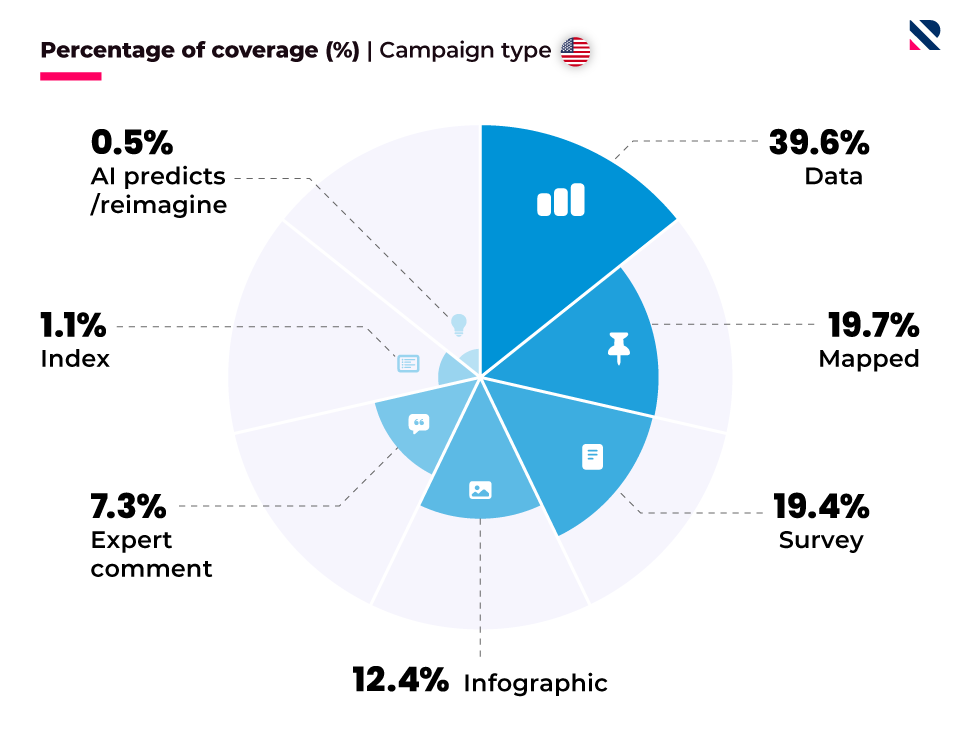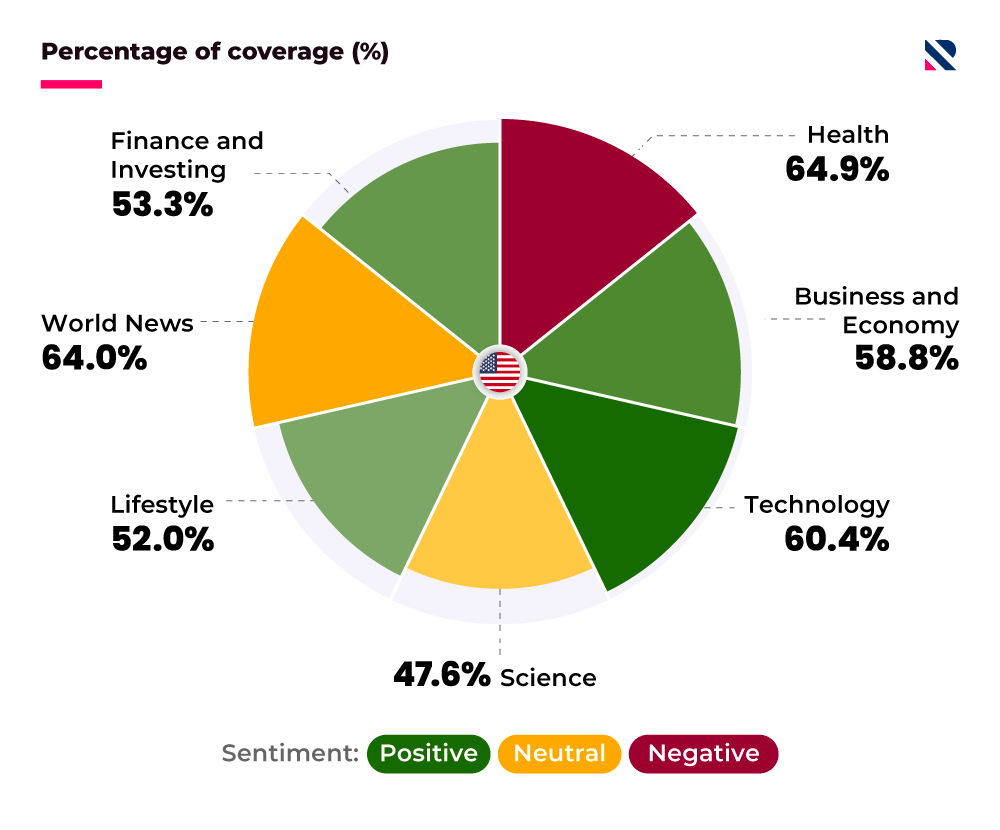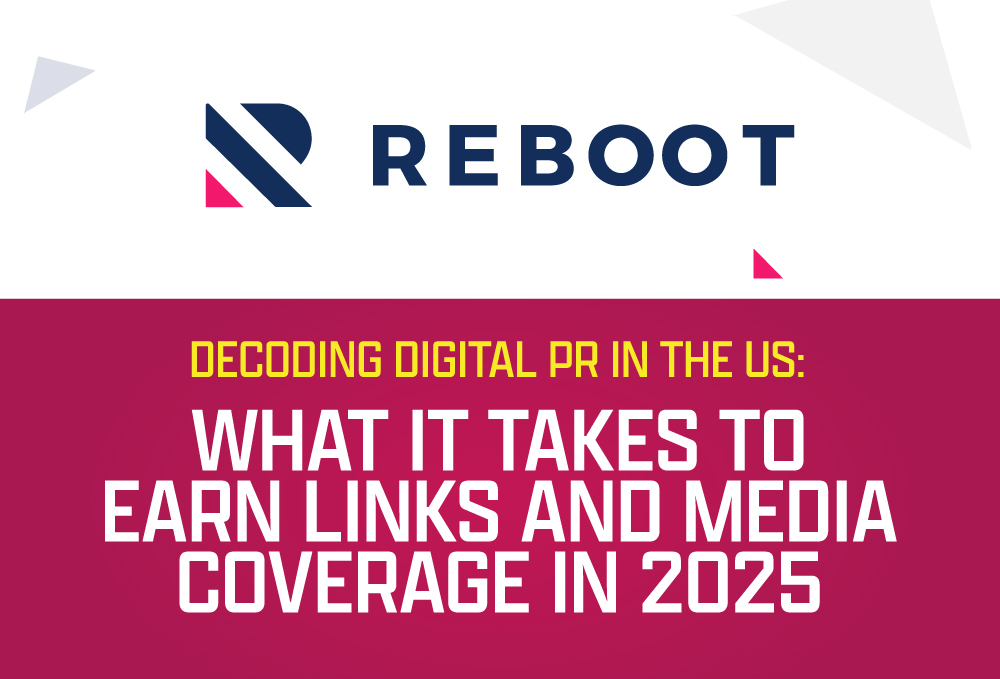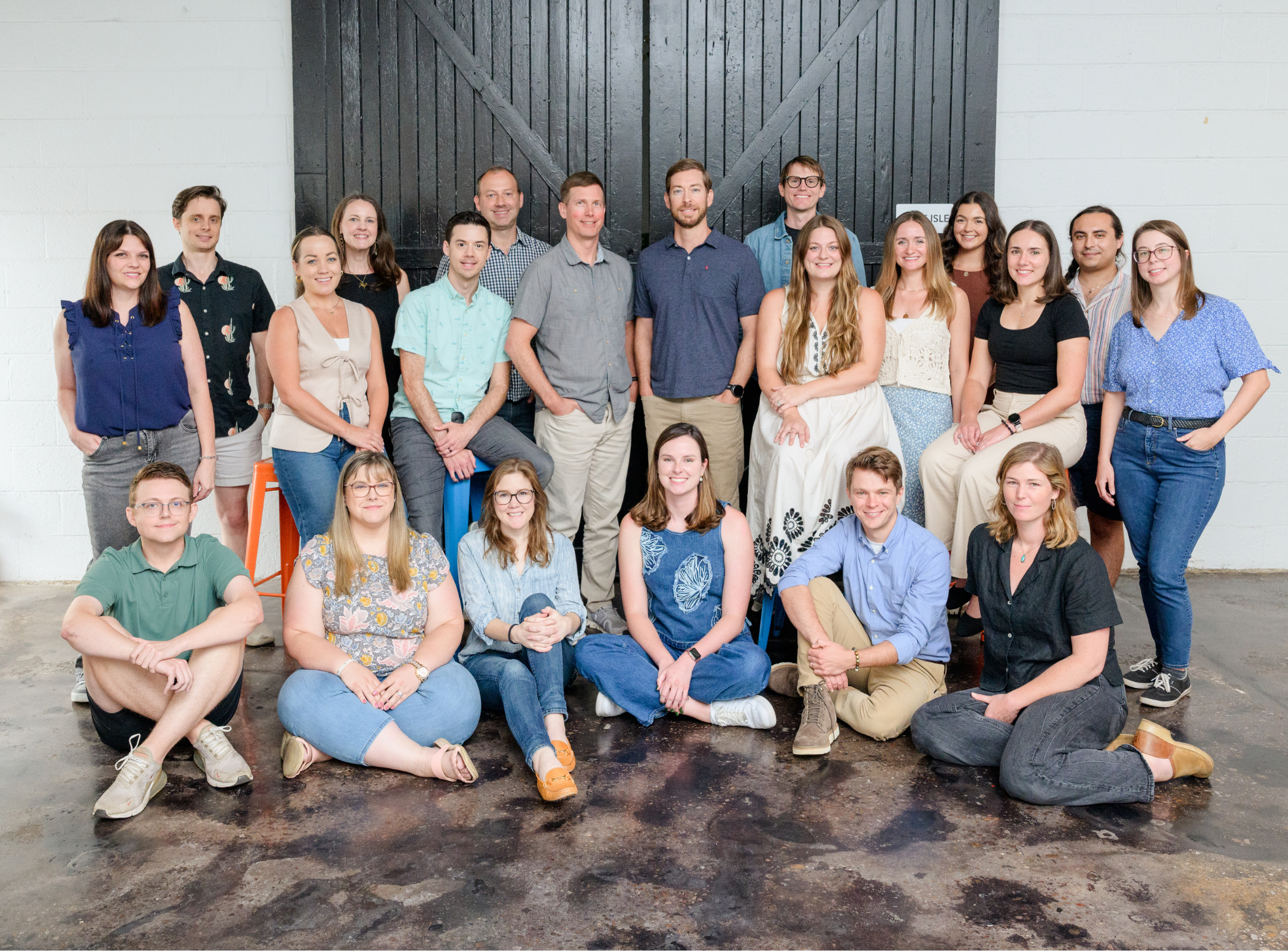By Reboot Online
Behind effective digital PR strategies lies a solid understanding of the media landscape in the target market. The press often reflects important aspects that shape a society, including cultural values, consumer behaviours, social norms and economic climate.
That’s especially true in the United States, which has the largest mass media presence among UK-speaking countries. According to new research by search marketing agency Reboot Online, the American press accounted for 64.2% of articles analysed – more than the United Kingdom, Australia, and Canada.
Online news is the top source in the US (72%), with the average American spending around eight hours per day consuming digital media. This gives brands an opportunity to craft digital PR strategies that will establish their presence through earned media coverage, reach their target audience effectively, and position themselves as forward-thinking industry leaders.
Digital PR in the United States
A large media landscape also means strong competition. With US journalists receiving thousands of pitches daily, how can brands cut through the noise and secure high-authority links and coverage?
Digital PR agency Reboot Online analysed US-based articles to reveal the most common campaign types, the news categories they appear in, and the sentiment distribution across each.
Top 3 US Campaign Types & Why They Work

If you want to earn links in the US media, prioritise data-driven campaigns. These made up nearly 2 in 5 articles analysed (39.6%) – twice as many as Mapped campaigns (19.7%) or Surveys (19.4%).
The chance of coverage will increase even more by segmenting the data by region. That’s because Mapped studies (19.7%), which present data and trends across US regions, usually with visual maps, were the second most covered campaign by the American media.
Successful digital PR campaigns are those that resonate with the audience. Because the US is so large and diverse, campaigns that show regional data are more relevant to local audiences. This also applies to Surveys, the third most published campaign type (19.4%).
The popularity of Surveys suggests interest from the American media to understand public opinion, especially when insights are further segmented by local demographics, making them even more valuable.
Media Sectors Driving the Most Coverage in the US

Health is the leading news category in the US (24%). While this reflects the significant role of healthcare in the country, 64.9% of news articles are negative, reflecting the ongoing national debates on the topic. Over half of the stories in Health use Infographics (51.3%), potentially because of their visual appeal and digestibility.
Business & Economy is the second industry driving the most coverage in the US. The sentiment of articles is highly positive (20.2%), showing that stories with an optimistic tone are more likely to be covered. Brands can use this to create digital PR stories on innovation and opportunities rather than challenges.
The Sports category represents only 1.5% of articles. Given its cultural importance in America, this indicates that sports coverage is often linked with broader sectors like National News or Entertainment.
The US also leads in World News coverage (5.7%), compared to the United Kingdom, Australia and Canada. Infographics are the most common type of digital PR campaign for this sector, which makes complex global news easier for readers to understand and share online.
Local News (0.7%) in the US has more media attention than National News (0.4%). National News in the US relies heavily on Data campaign types (83.8%) compared to Local News (35.8%). Instead, Local News uses Mapped campaigns often (38.7%), likely due to regional tailoring. Overall, Local News has a more balanced distribution of campaign types, while National News skews towards data-driven stories.
How to Align Digital PR with Evolving Media Trends
Digital PR is constantly evolving, presenting brands with both challenges and opportunities in equal measure. And it’s no different in the US. From tech developments to shifts in media consumption, there are many factors that Digital PR professionals need to adapt to create relevant stories to target audiences and help brands establish industry leadership.
Here are practical tips to help you navigate these changes in the US:
- Increasing use of AI for search
The rise in Large Language Models (LLMs) is changing how people search for information online. With over half of Americans now using AI tools, digital PR professionals need to adapt their strategies.
🔍 Users ask more elaborate questions to AI than traditional Google searches. For example: “weekend brunch spots with outdoor seating and good vegetarian options” versus just searching “brunch near me”. This shift creates new opportunities for brands to structure content that responds to these more specific and nuanced questions.
💻 Be aware of your brand’s digital footprint. The content brands publish doesn’t just affect how people perceive them, but also shapes how AI tools interpret and present information to users. This means maintaining consistent messaging across all online platforms is increasingly important.
📊 Brand monitoring is evolving with new tools to measure how brands appear in AI conversations. These tools can help Digital PR professionals understand which sources LLMs reference when discussing their brand, and leverage these insights with optimisation strategies to drive impact in AI searches.
- Use of unique data sources
Reboot Online’s study revealed that almost 2 in 5 (39.6%) of articles published by the US media are data-driven. With trust in the news in the US being relatively low (32%), the preference for data-driven stories suggests that journalists prioritise facts and figures in their articles to enhance credibility.
Utilise original research and generate unique datasets to provide journalists with unique insights backed by solid, credible data. But don’t stop there. With the rise in social media as a news source for Americans, brands need to think about how their data can be transformed into visually compelling and easily shareable content like infographics or interactive tools.
- Build media relationships
Building media relationships improves the chances of coverage and allows brands to understand journalists’ needs. For 7 in 10 North American journalists, digital PR professionals can help make their job easier by understanding their target audience and what they find relevant.
As media outlets increasingly prioritise relevance, outdated pitching methods such as “spray and pray” should be avoided. Instead, Digital PR professionals should invest time in writing tailored press releases, cultivating meaningful journalist relationships, and understanding what they’re looking for.
How to Pitch to US Journalists
Pitching in Digital PR goes hand in hand with understanding the media landscape. Knowing the context of the US market and its journalists will ensure that not only does the content hit your target audience, but the delivery of your valuable content is strategic and tactical as well.
- Schedule outgoing pitches for maximum impact according to US time zones. The US is a country that spans seven time zones. Identifying the right time for the most relevant content to be delivered increases the chance of being seen.
- Always use US English. This small change can greatly impact how your pitch is received. Localising the language used in your press release not only makes it more accessible to its recipients but also demonstrates that it has been tailored.
- Convert any currencies to US dollars. Similar to above, this small change can hugely impact how your pitches are received. Converting any currencies ensures that the figures within your campaign can be immediately relevant, understood, and contextualised without requiring more work.
- Leverage US trends and points of interest. Utilise the most US-focused data points or trending topics among the US audience to make your pitch stand out. The key is to make the connection between your pitch and the recipient as quickly as possible by catching their eye with what their audience would be most interested in.
Top 5 Tips for an Effective US Digital PR Campaign
- Be aware of the geographical impact of the US
The geographical boundaries of the US also impact the way its media landscape operates – particularly with local interests and trends.
Publications in the US can have national interest, state-wide interest, city-wide interest, or even town-wide interest. Depending on the scope and coverage area, the audience for each can also vary greatly. Consider what your campaign is about, which audience would be interested in it, and why they would be interested in it.
- Understand the cultural context of the US
The US market differs greatly from other English-speaking countries. Tapping into the cultural context can lead to greater success in gaining coverage. Most obviously, this can be:
- Regional differences – The US is broken down by states, and has many larger regional classifications such as the East Coast, West Coast, Midwest, and South. Each region has its own interests, trends, alliances, and even familiarities (E.g. In-N-Out Burger is mostly exclusively available on the West Coast, and is beloved. There is also competition with Shake Shack, which is exclusively available on the East Coast).
- Political differences – The US is a two-party political system, which sparks lots of conversations within the country and influences trending topics.
- Cultural nuances – The US is a large country with its own opinions, preferences, and habits. This can range from travelling habits to preferred models of cars. Having a keen understanding of the US cultural nuances can help you tune into successful digital PR campaigns that are valuable and of interest within the country.
- Keep your finger on the US pulse
The US is a powerhouse of film, TV, media, influencers, food, drink, and so much more that creates a microcosm of culture that the population is tuned into.
- Use tools and research to provide context to the US
Use all the tools available to you to gain as much insight into the US as possible before any campaign work is done.
- Google Trends can give insight into trending topics based on search data. It is particularly useful in uncovering emerging trends or any changes in a topic.
- Social media platforms like TikTok, Instagram, X, or Reddit are great ways to tap into the most relevant topics and trends in the US. They can also be leveraged to shed light on cultural nuances.
- Keep an eye on national events and local important dates.
Given the cultural nuances of the US can be unique, events of significance, like the Super Bowl, should be monitored and used to your advantage.
Case Study: Leveraging Regional Differences to Boost Coverage
Understanding the regional differences in the US can dramatically improve the success of your digital PR campaigns. Here’s a practical example of how one brand leveraged this knowledge.
The Most Haunted States in America
Conducted by SEO agency Reboot Online, this digital PR campaign demonstrates how data-driven stories in Mapped format (segmented by local demographics) in the US can be successful.
From Halloween to urban legends, spooky stories and supernatural themes are part of American pop culture. However, they’ll resonate differently with readers based on their location and the historical ties of their region to the themes.
To explore this, data was collected based on the number of cemeteries, ghost sightings, the number of paranormal investigators, as well as haunted location data, to reveal the most haunted states in America.
As a Mapped study, this campaign was tailored by highlighting data unique to each region, ensuring that stories were relevant at a local level.
The travel angle tailored to readers in Texas was particularly successful, earning high-quality placements, including a link in Forbes. That’s because the story focused on key haunted locations, which sparked interest from local audiences in discovering the most haunted spots in their own state.
Following the same premise, Florida’s ‘ghost sighting’ factor showcased the state’s reputation for paranormal activity, resonating strongly with the region’s history. It resulted in coverage in outlets catering to both local and broader audiences interested in spooky tourism and paranormal history.
The Results
- 38 pieces of coverage
- 71% of articles from US regional outlets
- Average DR of 60
Additional results from this and other campaigns can be found in our whitepaper “How to Optimise Your Digital PR Strategies for International Success”.

More about Reboot Online
Award-winning search marketing agency, Reboot Online, was founded by Shai and Naomi Aharony in 2012 and centred around an ethos of transparency, experimentation, and growth. These form the bedrock of our values, allowing us to strike the perfect balance between creative thinking and technical knowledge.
We are a team of in-house PhD-level data scientists, creative strategists, performance marketers, and international outreach experts specialising in SEO, Digital PR, Paid Media, and Data Marketing. Each team works together to help brands optimise their online visibility and conversion potential across all stages of the customer journey. Make sure you keep up to date with all things Reboot via our social media channels.






